[Katie Schumacher, Wisconsin Historical Museum]
Today we are pleased to introduce Dr. Ken Cameron as part of the Wisconsin Historical Museum’s History Sandwiched In lecture series.
The opinions expressed today are those of the presenters and are not necessarily those of the Wisconsin Historical Society or the museum’s employees.
Ken is the director of the Wisconsin State Herbarium, a collection of over 1.4 million specimens of algae, fungi, lichens and plants.
His primary laboratory research interests focus on the systematics, evolution, structure and conservation of orchids. His fieldwork has taken him all over the world, from Mexico to Borneo and from China to New Caledonia.
In addition to his work with orchids, he is passionate about all aspects of plant biology and is eager to share that passion with fellow scientists, students and the public alike. Here today to share the history of the Wisconsin State Herbarium, please join me in welcoming Ken Cameron.
[applause]
[Dr. Ken Cameron, Director, Wisconsin State Herbarium, UW-Madison]
Well, thank you. It’s a pleasure to be here, and I especially want to thank you for turning out on this beautiful September afternoon. I’m sure you’d rather be out in the Square.
I hope to educate you and have a little bit of fun this afternoon as we talk about the University of Wisconsin Madison’s herbarium, otherwise formerly known as the Wisconsin State Herbarium.
As you just heard, I’m a professor in the Department of Botany on campus, and I also serve as the director of that facility.
So, if you don’t know what an herbarium is, first let me just say that has nothing to do with oregano, thyme, rosemary or parsley. Although, we probably have specimens of all of those in our collection.
We are a scientific museum or library-type collection of preserved plant and fungal specimens. Most of these are pressed and flattened and mounted on acid-free card stock. In some cases, such as lichens, they’re actually folded into small packets.
The method that we collect and preserve our specimens is very similar to the way that botanists have done it for hundreds of years. I I brought along my own personal plant press over there on the table. And, basically, we go out into the field, we collect the plant specimens that we’re interested in, we press them between newspapers, dry them, and ultimately mount them.
So, you can see a few samples here. I didn’t bring any physical samples because we generally don’t like to take those outdoors, out of the museum. But I have some digital representatives here for you to see.
So, some of these are actually quite beautiful. And I just want to give a little plug to my friend Linda Neusen, who’s in the audience here. She works in fiber art, and there’s currently an exhibit at the UW Arboretum that features, in fact, some of these very specimens that Linda has replicated in fiber form. And they’re absolutely stunning and beautiful. They’re on display at the Arboretum Visitor’s Center, if you get a chance to go down there.
So, we’re located on the UW-Madison campus in Birge Hall, which just celebrated its centennial anniversary. Birge Hall is at the top of Bascom Hill. So, you may recognize Bascom Hall right here in the center, up on Bascom Hill, of course. And Birge is over here that the red arrow is depicting. So that’s the home of the Botany Department and the State Herbarium.
We are open to the public basically all work days from 6:30 a.m. to around 5:30 p.m. We’d prefer that you make an appointment, but you’re welcome to come in and use our facilities. They look something like this. We have rows and rows, hundreds and hundreds of metal cabinets that are all tightly sealed up, and within them are these treasures of our plant collections, as well as books and field notebooks and botanical art, illustration. A real plethora of different materials that we provide to students, to researchers, not only our own faculty but from around the world. I just had colleagues from England, the Netherlands, China, Korea in the past few weeks come through the herbarium and use our collections and our facilities.
We are one of the largest herbaria in the world. As you can see here, in the upper right corner, we hold about 1.4 million specimens, which puts us within the top one percent of the worlds herbaria. And you can see the breakdown here in this gray box. We, of course, have a number of plants, vascular plants. Around 800,000 of those. Another 260,000 of them are collected exclusively within the State of Wisconsin, but then you see, we have large collections of lichens, bryophytes, which are the mosses and liverworts, as well as parasitic fungi, little smuts and rusts and fungi that cause pathogenic diseases in other plants.
So, that number, around 1.4 million, puts us ranked in the top ten of North American herbaria. And I like to remind people that were the third largest public university herbarium. Harvard is larger, but theyre private. Theyve got a lot of money, and theyve been collecting plants for much longer than we have. So this is a really important and valuable resource that we have right here in our own backyard.
And why is it that the Wisconsin herbarium should be so important and have such a large collection of plants? One of the reasons is that the flora of Wisconsin, believe it or not, is really unique. It represents a confluence of at least six different botanical regional floras in on the continent of North America. What I mean by that is in Wisconsin we have plants that are representative of the deciduous forest biomes of Appalachia.
The Appalachian flora kind of reaches its northwestern distribution or or range within Wisconsin. But that overlaps within the Midwestern Ozarks flora thats primarily a central Midwest. Its a mixed conifer and deciduous type of forest ecosystem. Of course, we also have representation of the Great Plains flora in our grasslands and our prairies that essentially reach their eastern distribution in yellow there. And then we also have boreal forests, especially in the north of Wisconsin coming down into our state at their southern limit.
On top of those four, we also have some very interesting western United States and southeastern coastal plain disjunct plants that are also found in Wisconsin. So, theres almost nowhere else in all of North America where you have an overlapping distribution of all of these different floristic elements, these botanical communities, all converging and overlapping in one place. You can see the hatch marks. Wisconsin really is unique.
Another way to look at that is to consider world biomes. So, biologists talk about the plants and animals on a global continental scale as biomes. They theyre may be around seventeen different biomes. So, youve heard of the tropical rainforest, the desert, the arctic tundra, for example. Well, Wisconsin, actually, it its what I said earlier, its the confluence of at least five of these world biomes. Five of seventeen world biomes can be found in Wisconsin. There is really nowhere else in the continental United States where you can capture this much interesting diversity.
So, Wisconsin has attracted botanists and been of interest to biologists for a very long time. We have a complex mosaic of vegetation. And I often tell people that to really know this state, not only do you need to know its history and its people, but you need to know its plants.
[laughs]
Okay?
So, botany matters. And and part of the challenge for us, of course, the herbarium is a museum. Its the closest thing that we have to a time capsule or a time machine to go back and see what vegetation looked like in the past.
And we know that our vegetation has changed considerably, right? So, on the left of the screen, you can see a depiction, a reconstruction of what we believe the vegetation communities looked like in Wisconsin prior to European settlement. And, on the right, youre seeing a more recent depiction of the landscape as it looks today.
The yellowish colors in the screen, of course, the areas that have been cleared or plowed for agriculture, which consumes a great amount of our state. The magenta or purple colors there represent urban urbanization, urban sprawl. And, of course, although there is a lot of green in the north, most of that virgin forest has been cut over long ago. So, the changes have been truly dramatic in our state.
In the south, in southern Wisconsin for example, prior to the 1800s, we would have seen a mosaic of grassland prairies, savannas mixed in, oak trees, for example, in these forests. And the maintenance of that biome or that forest and grassland community would have been primarily by fire. There was grazing as well by bison and elk and other animals, but fire was very important. Today, fire has mostly been suppressed. The southern part of our state is dominated, of course, by agriculture. Theres a few small wood lots which allow for selective logging, hunting, and recreation, but theres not much left of the original vegetation, of course.
And changes have occurred in the north as well. Prior to European settlement, it would have mostly been old growth, sugar maples, the large white pine forests, hemlocks, yellow birch. Not much fire in the north because its cold and wet, but we would have seen blow down from storms, occasional fires. Today, of course, logging is important. Not much agriculture except in the form of cranberry farms which have cleared vast areas of northern bogs and boreal forests. And the plants have been replaced by fast growing species such as aspen and paper birch. So, there have been dramatic changes across our entire state.
These are compounded, of course, by global climate change. And this is a graph that people are always surprised when I show. Of course, you know that the first Earth Day was held on the campus of UW-Madison in 1970, and since then, very accurate records have been kept of average temperatures across the United States. Believe it or not, Wisconsin ties with Delaware for the number one position as the, the the number one state in the U.S. that has experienced the most rapid and dramatic climate change or average temperature since the first Earth Day. And you can see that on the graph to the right. So, climate change is certainly affecting us all and its real.
So, our specimens, as I mentioned, are a proxy for the past, the history of our state, especially it’s biota. And these specimens that I’ve mentioned, of course, are used for research in a variety of different ways, right? From taxonomy of plants, ecology, invasive species, history of science, ethnobotany, anthropology, landscape restoration, and the climate change that I just mentioned.
So, I’d like us to all put this into practice with an example. You may be famil familiar with the wild columbine. It’s a very beautiful spring wildflower. A lot of people have it growing in their garden. Aquilegia canadensis is the Latin name. And in our collection, we have around 900 different herbarium specimens. And they’ve been collected from across our state, as you can see here in the red dots on the distribution map. We have around 900 specimens. And what I want to do is focus in on just one place, Sauk County, the county just up to our north. And I’ve taken out 10 different herbarium specimens from Sauk County. It’s important that we choose the same place on the Earth for this exercise.
And what I want you to do is to take the graph paper that I’ve handed out and put a little X or a check mark or a dot or whatever you want, some notation of the date that these specimens were collected in flower.
So, as an example, here’s an herbarium specimen. Let me go back a minute. Here’s one of the specimens from our collection. You can see it’s in flower. And I enlarged the label so that you can see it was collected on May 14, 1959. So what you need to do is find the year 1959 on the X-axis, go up to May 14th, and put a dot in that cell.
Make sense?
Pretty easy, right?
Okay, so let’s do this for 10 specimens. Here are two. So, you’ve already done the first. May 14, 1959. Got it?
The next one, May 12, 1961.
Put an X in that box.
Next two, 1955, May 21 and 1948, June 16.
I hope you’re also paying attention to the quality of the specimens. Some of them are more attractive than others. Some are retain their color better than others depending on how they were preserved. We move a little into the future, 1971, May 8.
These are all from Sauk County. So, we’re not having to worry about differences in latitude or elevation. May 14, 1963.
1956, June 10.
And then 1968, May 9th.
By the way, people often ask us, “Why do you have so many of the same species? Wouldn’t one be enough?” I mean, you go to a library, they generally just have one copy of every book. Well, part of the reason is that plants and animals are diverse in their morphology, right? If we were to just choose one homo sapien to represent our species, who would we choose? What would we choose? We’re all so different. Well, the same is true in plants. This is a tiny, little one with big flowers. That’s a tall, skinny one with maybe smaller flowers. We want to capture the range of diversity in form and distribution across the landscape.
Okay, we got two more. 1960, May 23rd.
And then May 29 of 1949.
All right, so you’ve put dots then in the appropriate cells. This represents a pretty small window of time, just 1948 through 1971.
What I want you to do now is connect the dots from the oldest on the far left to the most recent on the far right. And it should look something like this. What you see here is some range in variation, right? So, in some years we see that the wild columbine has been flowering late, in June, for example. The next year it might flower early, in May. There is variation from year to year going up and down. But the overall trend, I hope you agree with me, is pretty clear.
If we were to try to kind of average a diagonal line connecting all of those dots, we’d have something like this red dot here. There’s absolutely no doubt that Aquilegia canadensis in Sauk County, Wisconsin is flowering almost a full month earlier now than it was back in the 1940s. And if we were to add more data and extend this out further, we’d probably see an even sharper piece of evidence that phenology, the reproductive biology of plants and animals, is changing through time. And these are not just year to year weather phenomena. This is a long-term trend. So, what does that mean for the future? Well, who knows, but if we were to extend the line out further, you know, perhaps wild columbines will be flowering in April in your children’s lifetime. We can’t be sure.
So, this is just one example of the way that the scientists use these specimens. And thank goodness that we’ve preserved them in in as snapshots of space and time for for over a century.
Okay, so that gives you a little bit of a taste for what we do with the collection, but how did this collection come to be? I realize you’re mostly here for a history talk. So, let’s look at the State Herbarium’s history since its founding in 1849.
As you know, the state of Wisconsin came into being in 1848, and shortly thereafter the Board of Regents of the University of Wisconsin, as it was newly formed, met. And within their, it was actually their second meeting at their formation, they stated that it would be expedient and important to form a Cabinet of Natural History. Meaning that they wanted samples of plants and animals and minerals and archeological artifacts to create this museum, this Cabinet of Natural History. And it was Increase Lapham of Milwaukee, celebrated as our first scientist, who donated his own personal collection of around 1,000 to 1,500 different species or specimens to form the State Herbarium.
And he said that this represented nearly all species known from Wisconsin at that time, as well as other specimens from from abroad. There’s a fantastic book that was just published by the Wisconsin Historical Press on the life of Increase Lapham called Studying Wisconsin. And if youd like to learn more about his legacy, I encourage you to purchase that.
But we actually have some of the Laphams original specimens, such as this oak specimen, within our our collection. So, we really give credit to our origin to Increase Lapham. And, of course, the collection continued to grow, as did the Cabinet of Natural History. By 1865, it was said to have around 3,000 specimens. And, ultimately, after Increase Lapham passed away, the Universitys Board of Regents approved the purchase of his private library and collections in 1876, and it was said to have around 20,000 specimens at that point. So, a pretty rapid growth in these early days.
And by 1884, which is a really important year, Ill come to that in a minute, William Trelease, who was the curator of the collection at that time, mentioned that there were at least 12,000 species, he had thoroughly poisoned them and properly mounted them, as soon as possible, and that donations were coming in of thousands more specimens. So, the collection was growing really quite rapidly at the end of the 19th century.
Unfortunately, with growth comes growing pains.
[laughs]
And so, the collection was housed in North Hall on campus, which you may know, at the top of Bascom Hill. And ultimately it was overflowing, and so they relocated it to South Hall, directly across the quad, and it stayed there for four years but then ultimately moved into Bascom Hall.
[laughs]
So, you can see these specimens are getting shifted around campus a lot. And that’s when Edward Birge took control as the instructor of Natural History. He would ultimately become president of the university, and he was the curator of this Natural History Cabinet.
Again, it was growing so rapidly that they needed to relocate it. And Science Hall was built and completed so that the museum could move into proper storage facilities. Unfortunately, a major setback occurred in that important year that I mentioned, 1884. The original Science Hall was burned to the ground. And it’s thought that we lost most of our original founding herbarium specimens. As you can imagine, these don’t hold up to fire too well.
[laughs]
Of course, Science Hall was rebuilt, and it still stands today. You can see pictures of the early days and then a recent photograph. And this is what the Cabinet of Natural History looked like within Science Hall around that era. So, it formed the foundation for basically all of the life sciences on campus. I mean, I like to remind people that our medical school, our nursing school, our Ag programs, the College of Letters and Science, zoology and botany departments, all of the life sciences emanated from this original Cabinet of Natural History.
Today we’re scattered around the campus. There’s a zoology museum, an anthropology museum, a geology museum, an entomology museum, and the State Herbarium.
This is what the herbarium itself looked like after the fire when Science Hall was rebuilt. Pretty modest. We still have some of those old wooden cabinets there. They weren’t very good at keeping the bugs out.
[laughs]
The cabinets we have today are much better for archival preservation. But this is the herbarium in 1884.
Now, people are often surprised to find out that we still have some of Increase Lapham’s original specimens. We have almost 1300 of them, representing many of the counties of Wisconsin that you can see listed here. Most of them from the Milwaukee area, but he collected all over the state. How it is that these 1300-1400 survived the fire, we’re not really quite sure. Maybe they were in storage in the other building, or maybe the curators, when the fire broke out, ran in and rescued as many as they could carry. We had a fire drill yesterday on campus, and I was tempted to run in and grab the specimens and pull them out.
[laughter]
But we do have Increase Lapham’s specimens, several of them. And these are our most precious.
Not only did he collect plants, but he also collected mosses and he bound them in little booklets. Here’s an original of The Mosses of Wisconsin, by Increase Lapham. And you can see how meticulously he preserved and prepared each specimen. These were often sold to to earn profit to help fund his research. So, there are other museums around the country or the world that have sets of these handmade books that Lapham prepared.
So, moving forward after the the origin era, I like to call the early 20th century our period of rebirth and significant growth. So, there were a number of very important botanists who contributed their expertise. For example, Leyland Cheney was a moss expert, and he helped to form our large moss collection. John Davis, during the tenure of his curatorship, was a collector of fungi. He helped build us up into one of the largest fungal collections. And Norman Fassett, who’s pictured here in 1951, was a very important member of our faculty. He helped to grow the herbarium to 380,000 specimens by that point, including tens of thousands of his own. He published The Spring Flora of Wisconsin, which many people used in their classroom. We still use it today. The grasses of Wisconsin, a number of very important scholarly publications.
And along the way, as you can see in 1927, we continued to purchase or to acquire through donation different people’s private collections. That’s one way that we we do grow even to this day.
The mid-20th century I like to point out the really Herculean contributions of two important botany faculty: John Thomson, depicted here on the top panel, and Professor Hugh Iltis, depicted here on the bottom. I just saw Hugh on Friday. His health is is not as good as it used to be, but he is really the hero of our collection, helping to grow it to over 670,000 vascular plant specimens, which really gave us the hallmark or the earmark of being one of the world’s great herbarium collections. Hugh’s son, Frank, is here in the audience today, and I really just can’t say enough about both of these men’s important contributions.
And then, as you can see, we continue to take in or purchase private collections. Sometimes, you know, 20,000 specimens at a time, in the case of the Seymour Collection.
So, obviously, the collection had grown at that point to really be quite unmanageable in its small footprint. And in 1983, a new home was constructed for, not only the State Herbarium but also a new biology library. The red arrow shows a wing off of the back side of Birge Hall. So, if you can picture where we are, here’s University Avenue, there’s the botany garden behind Birge Hall, our glass house complex, and then this wing here is now the home of the herbarium.
We occupied the first floor, and the biology library was beneath us. It really allowed us to grow. So, we purchased very old, important historical specimens from the Catholic University in Washington, D.C., that was abandoning its herbarium. And we received a National Science Foundation grant that allowed us to modernize with compactors and metal cabinets. Janesville donated its herbarium, as did La Crosse in 1996. And because of its stature and working and importance in working with the Department of Natural Resources, Governor Thompson, in 1995, actually, in the legislature, passed a resolution to rename our collection the Official Wisconsin State Herbarium, which means that any publicly funded work or research by the DNR or the US Environmental Protection Agency, for example, they must deposit their work in our collection as the officially sanctioned state herbarium. Okay, so that’s why we tend to use that name today.
A major transition happened as we went from the 20th into the 21st century. I I I suppose in your own life you felt that was an important transitional year to the new millennium. Professor Iltis retired and Professor Paul Barry took over as director of the herbarium. And what Dr. Barry did was to really help modernize our collections. We started taking advantage of the internet, the new electronic resources that were available, and in 1999 we released this very early database. Here’s a snapshot of our web page at that time, to try and get the specimen data out into the hands of the public who might not be able to visit campus, but they want access to our collections. And so, we formed the WisFlora website.
Okay?
All right. So, early 21st century, this is what I know, most familiar since I joined the herbarium in 2008. I moved here from a position at the New York Botanical Garden and joined the faculty to become the herbarium director. And what I’ve been doing is really embracing this new digital era that we find ourselves in.
So, we received a grant from the Mellon Foundation to digitize many of our important collections. We received a $3 million grant that exclusively targets our lichen collection, especially our arctic and sub-arctic collections. We work in partnership with the University of Alaska. We continue to bring in specimens. So, Carthage College over in Kenosha decided to abandon their collection, and we took that in.
We also hired our first woman curator, our first woman staff member. You may have noticed that through our hundred-year history the names of a lot of men. And so, I’m very proud and and pleased that Dr. Mary Ann Feist is now our senior academic curator. And I’m also sad, but happy at the same time, that the biology library was consolidated with the agriculture library on campus over in Steenbock. And that allowed us to take possession of the space below us so that we could truly grow to become a two-story, several thousand additional new square feet of space. And we received another National Science Foundation grant to install new compactors in that space. So, we’ve been continuing to grow.
We are leading national efforts looking at invasive species. Digitizing those. We have a new website currently serving 607,000 specimen records to people around the world. And we continue to purchase or acquire collections. We have an endowment that allowed us to acquire a very significant collection from Germany of world lichens.
And then, finally, to the modern era, you’ve probably heard a lot about the Human Genome Project and you know that we’re living in the age of genomics. And the original founders and curators of the herbarium could never have imagined this use, but we just finished sequencing DNA, we call it DNA barcoding, the entire Wisconsin flora, all 2,600 species. We’ve sequenced a little two little pieces of DNA and almost all of the DNA was extracted from the herbarium samples. Even hundred-year-old dried leaves can yield quality DNA. This is a use of the collection that could never have been imagined a hundred years ago.
We’re also working on the development of a new smartphone app for the Wisconsin flora that we hope will be used by people all over the state. And we’re on Facebook! So, we’re embracing social media as well. So, who knows where the future will take us? But we’ve certainly come a long way in our in our history from 1848.
I like to tell people that although the methods of plant collection haven’t changed all that much, we still go out in the field, we still take our press, we still press and dry, but the modern 21st century is so different than it was in the 19th century. We’re in the laboratory extracting DNA. We’re working on computers and digital databases. But all of this work is still grounded on these original physical vouchered herbarium specimens that are so precious within our collection.
And so, with that, I’d just like to thank all of you for coming. I’d like to thank the Wisconsin Historical Society for inviting me to profile the Wisconsin State Herbarium. And I’d like to say that we’re always looking for volunteers and citizen scientists to help us process these collections. So please look at our website, herbarium.wisc.edu, or send me an email directly. My email address is listed there: [email protected]. Thank you for your time.
[applause]
Search University Place Episodes
Related Stories from PBS Wisconsin's Blog

Donate to sign up. Activate and sign in to Passport. It's that easy to help PBS Wisconsin serve your community through media that educates, inspires, and entertains.
Make your membership gift today
Only for new users: Activate Passport using your code or email address
Already a member?
Look up my account
Need some help? Go to FAQ or visit PBS Passport Help
Need help accessing PBS Wisconsin anywhere?

Online Access | Platform & Device Access | Cable or Satellite Access | Over-The-Air Access
Visit Access Guide
Need help accessing PBS Wisconsin anywhere?

Visit Our
Live TV Access Guide
Online AccessPlatform & Device Access
Cable or Satellite Access
Over-The-Air Access
Visit Access Guide
 Passport
Passport







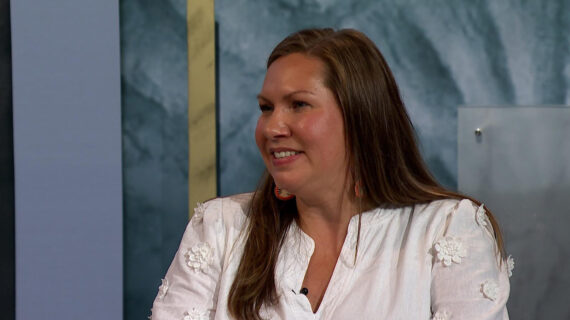
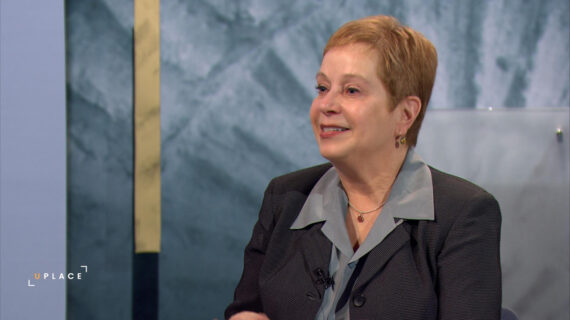
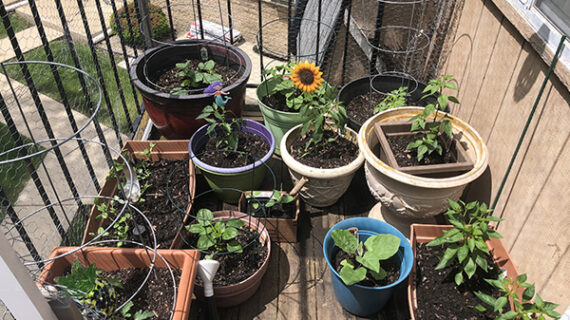
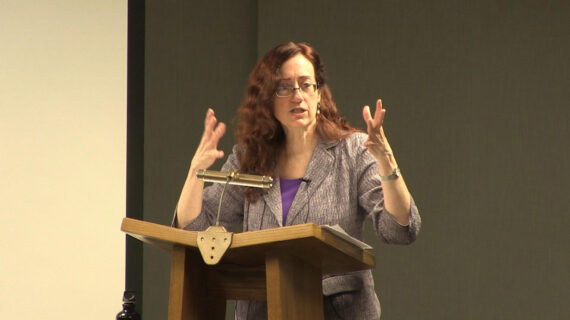
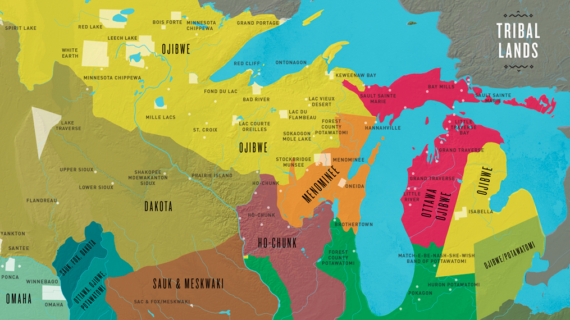
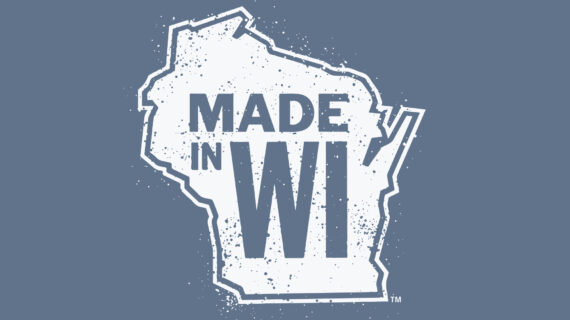
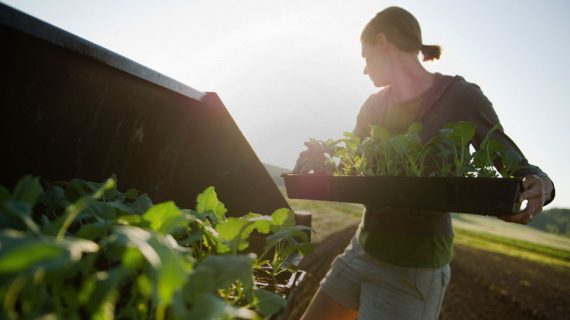
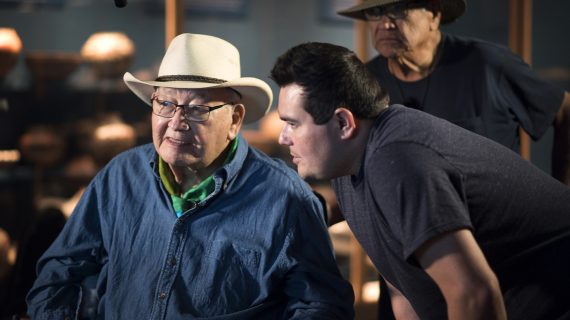

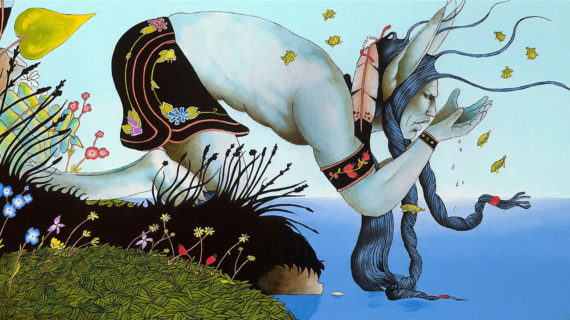

Follow Us